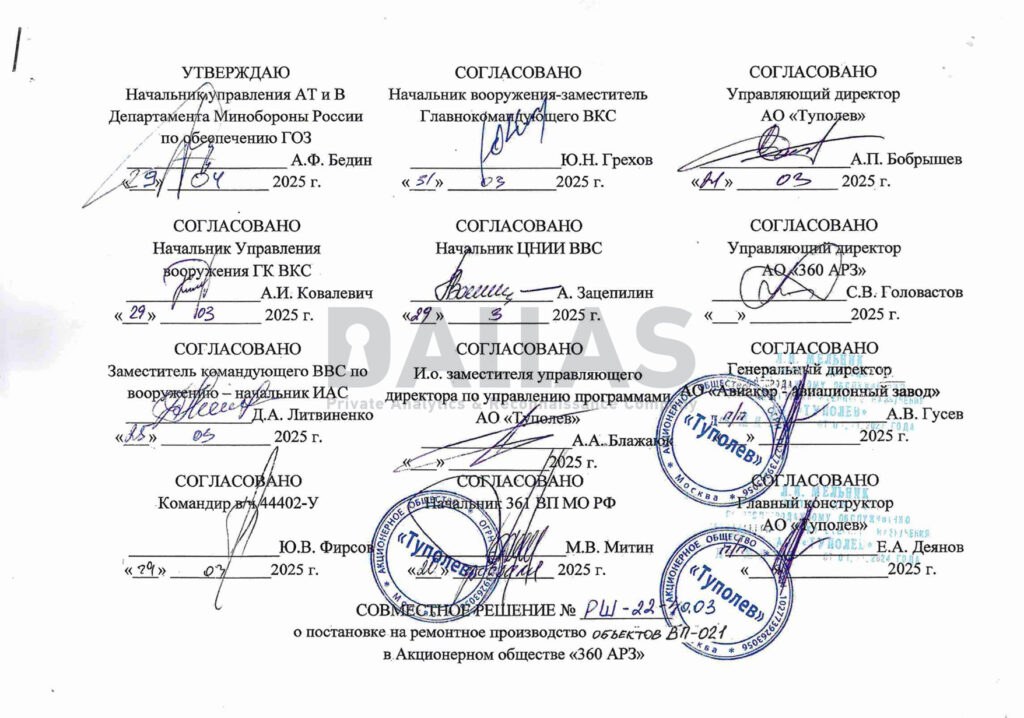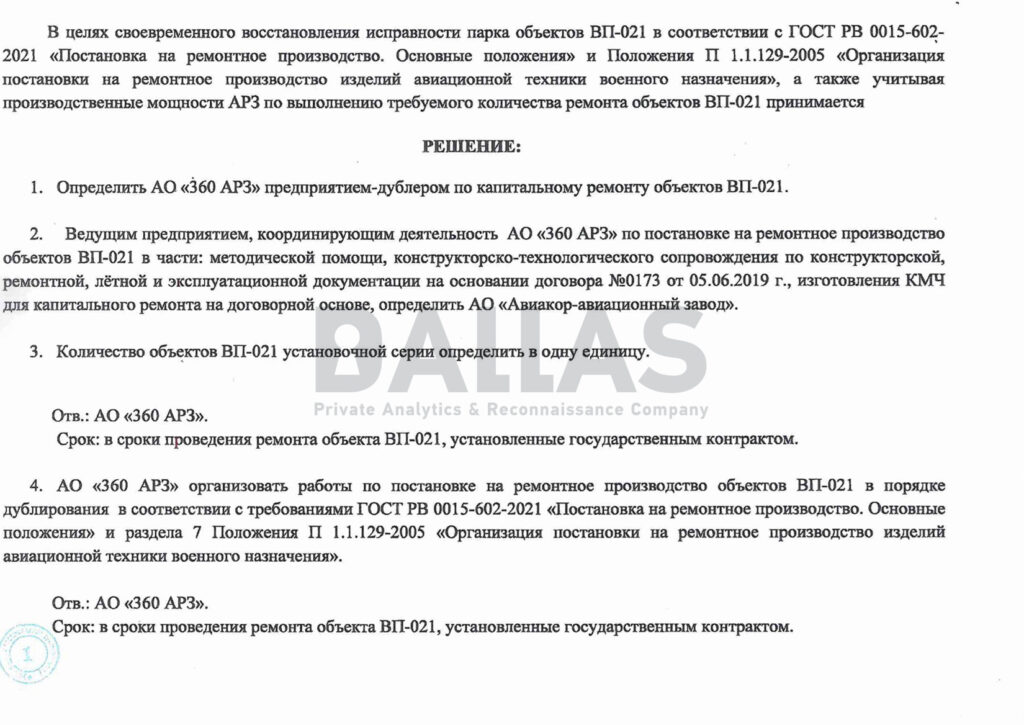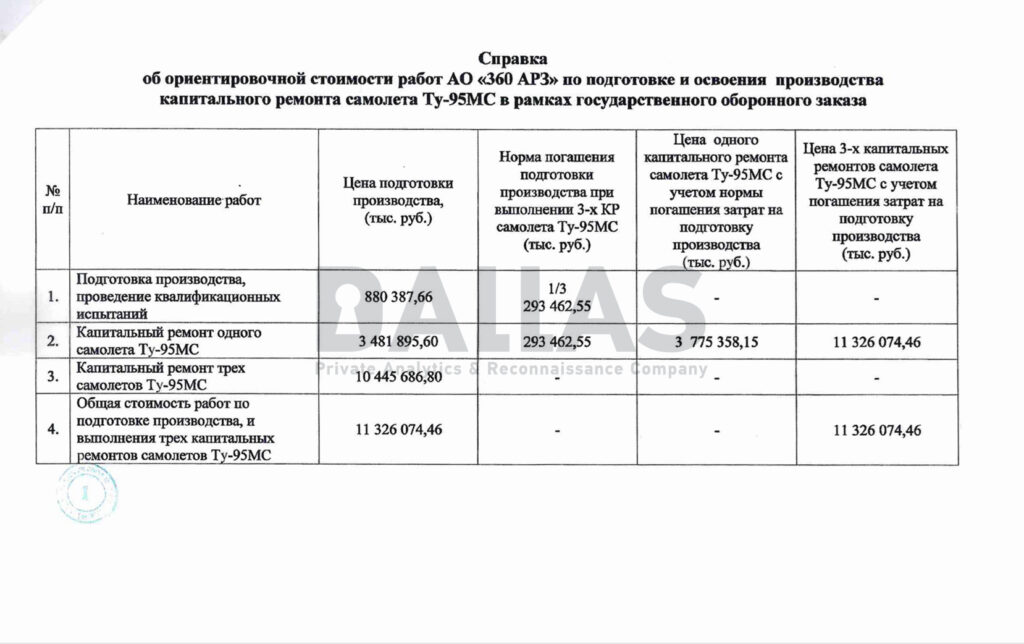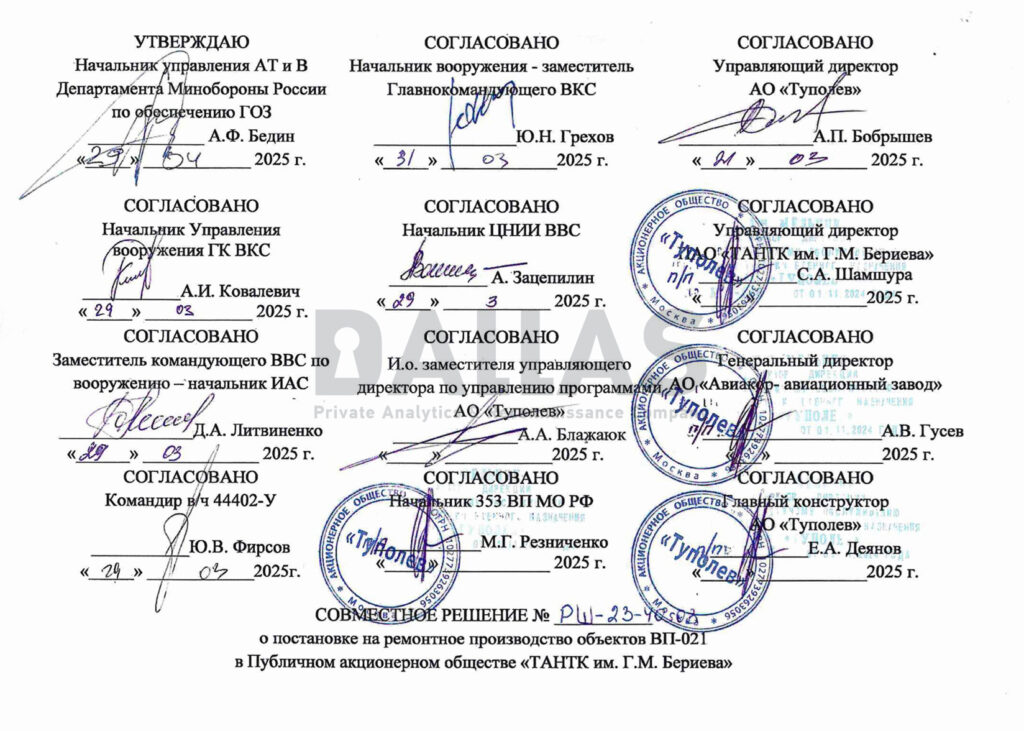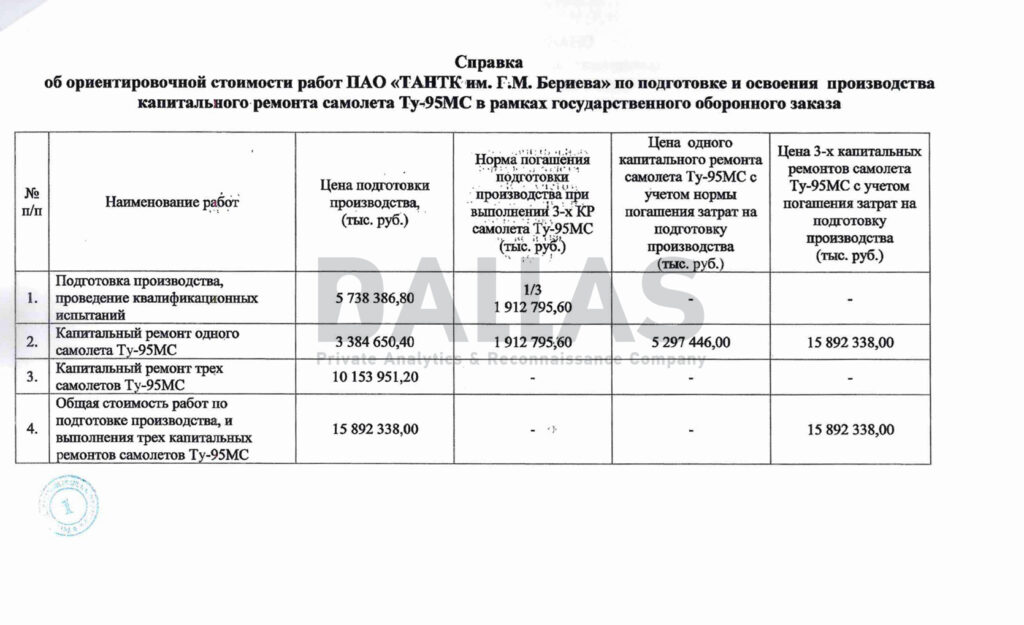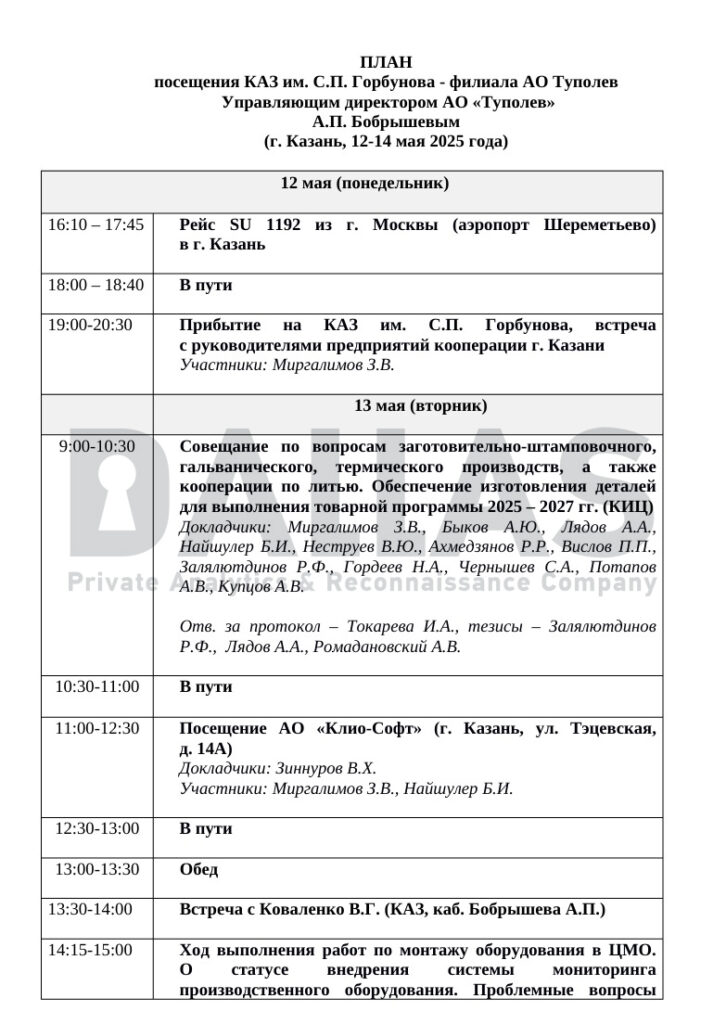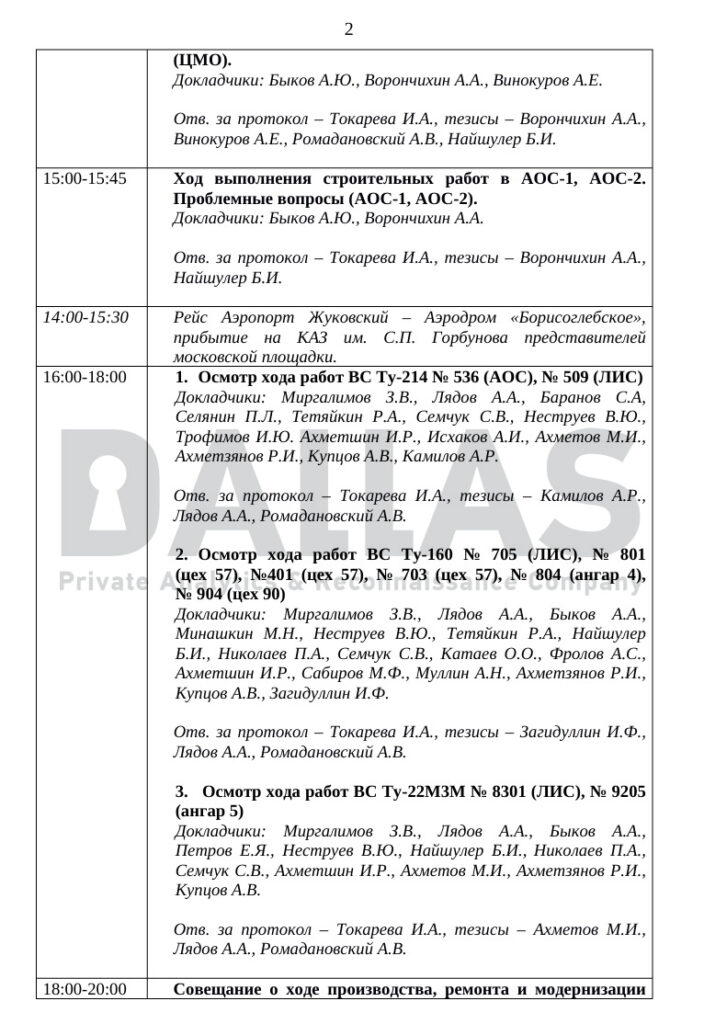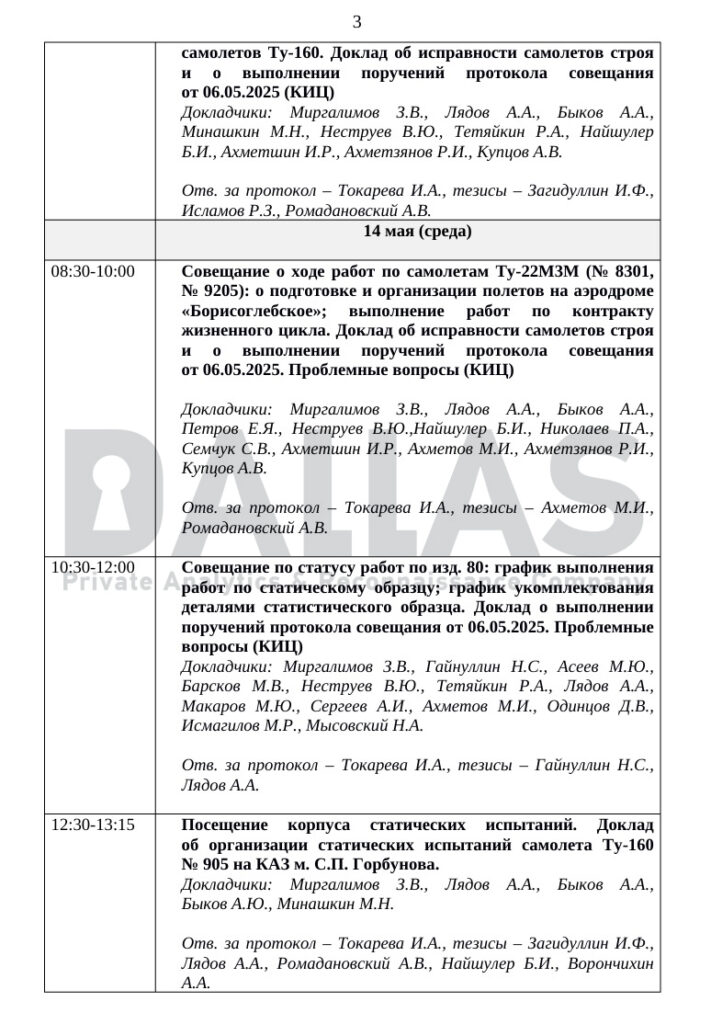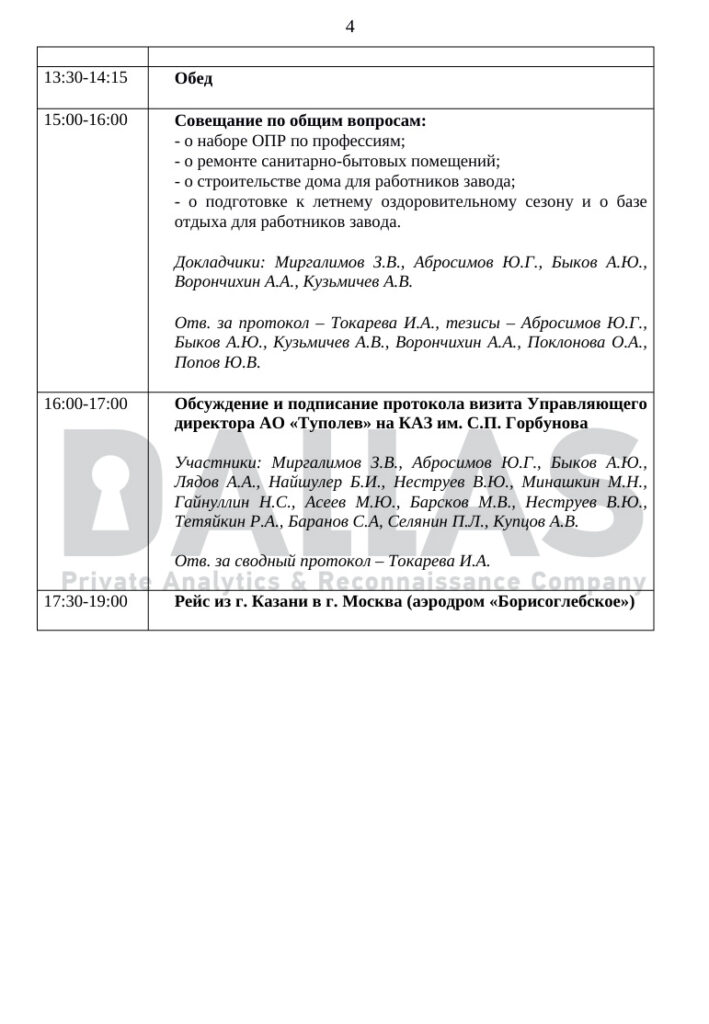For more than three years of a full-scale war, Russia’s use of missile barrages against Ukraine’s civilian population and critical infrastructure has become a grim hallmark of its brutal assault. Despite sweeping economic sanctions, the Russian defense industry has ramped up production of strategic missiles to some 1,000 units per year, investing billions of dollars in the effort. Yet the missile carriers – the strategic bombers themselves – remain aged: most rolled off the assembly line between 1983 and 1993, and none can currently carry a full weapons load due to airframe fatigue and reduced flight hours. How critical is this shortfall for Russia’s aviation sector, and should we expect a comprehensive overhaul of its bomber fleet?
According to our sources, at the end of March Russia’s Ministry of Defense approved and fully funded a major overhaul of six additional Tu 95MS bombers. The contract – worth over $270 million – was awarded to the 360th Aircraft Repair Plant in Ryazan and the G.M. Beriev Aviation Scientific and Technical Complex in Taganrog.
Meanwhile, at the Kazan Aviation Plant named for S.P. Gorbunov – the main production hub for Tupolev aircraft – the backlog includes seven new-build and repair orders for Tu-160 supersonic bombers, along with two Tu-22M upgrades. The specific airframes in the Tu-160 program carry serial numbers 705, 801, 401, 703, 804, 904 and 905, while the Tu-22M schedule covers airframes 8301 and 9205.
Among theese aircrafts, four Tu-160s are already deep in modernization, with completion slated by 2026. In parallel, Kazan is assembling the lone prototype of Russia’s futuristic PAK DA (“Prospective Long-Range Aviation Complex”), codenamed “Izdelie 80.” This static prototype, intended for ground testing of its stealthy “flying wing” design, is currently in the midst of component installation and – barring any setbacks – could be completed within a few years.
Notably, from May 12–14, 2025, a delegation led by Tupolev’s Executive Director A.P. Bobryshev toured the Kazan facility. Their agenda included a comprehensive inspection of all strategic bombers on site and an assessment of each airframe’s readiness.
What the Numbers Add Up To
Compiling these initiatives, Russia’s strategic bomber fleet could grow by nearly two dozen serviceable aircraft within the next few years, boosting its salvo capacity to over 100 long-range missiles. Such an arsenal poses a significant threat even to nations boasting advanced air-defense systems.
Western Assessments and the Road Ahead
Western intelligence agencies offer divergent timelines for when Russia might be ready to project this force beyond its borders – particularly toward NATO member states. Pessimistic forecasts cite “D-Day” in 2027, while more “optimistic” analyses push it to 2029. Regardless of the exact timetable, one point is clear: the next potential target of Russian strategic aviation – much like Ukraine today – must prepare for large-scale missile barrages from modernized bomber platforms.
The choice facing the West and its allies is stark: stand by and watch this resurgence unfold, or intensify military-political support and sanctions to blunt Russia’s revitalized longrange strike capability. The implications for European security – and Ukraine’s own defense – could not be more profound.



